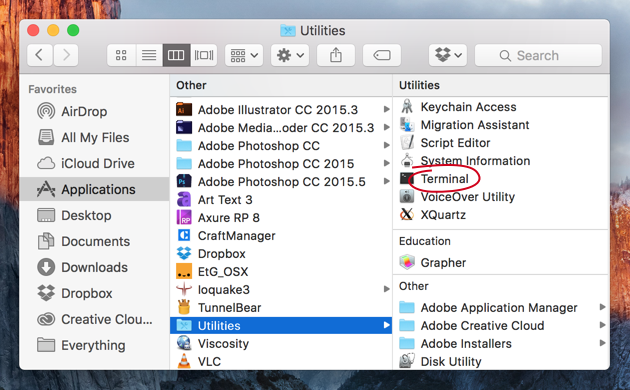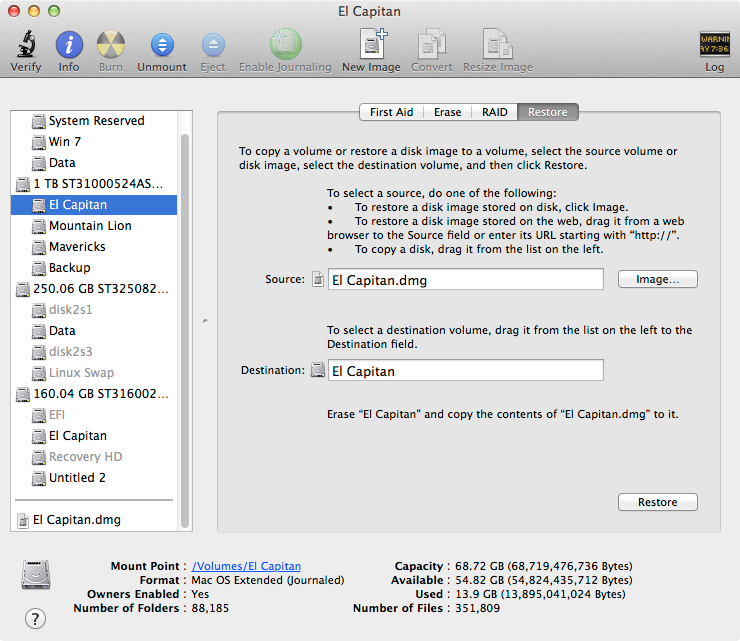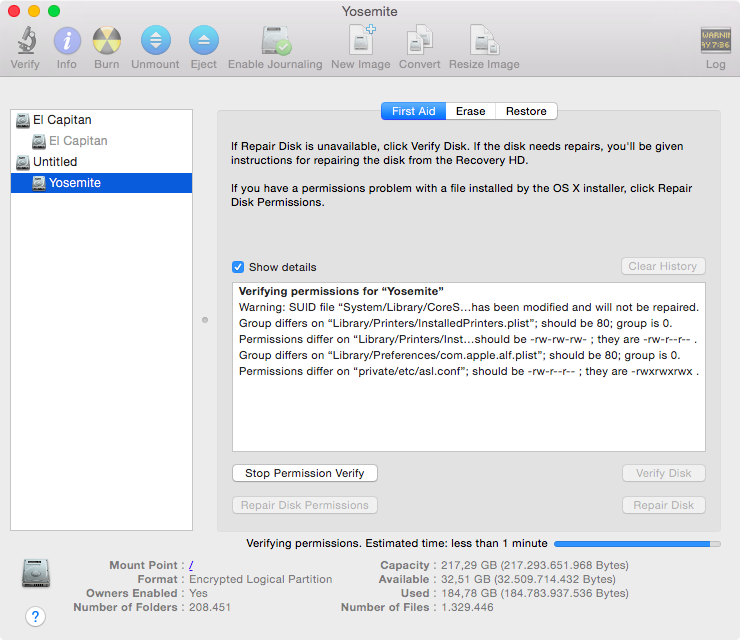
- #Run disk utility mac el.capitan how to
- #Run disk utility mac el.capitan mac os x
- #Run disk utility mac el.capitan archive
- #Run disk utility mac el.capitan pro
It is possible to change or assign file permissions using $ sudo chmod Terminal command followed by a number representing permission groups and filename.
#Run disk utility mac el.capitan mac os x
The Terminal app can help in checking Mac OS X file permissions: Type in chflags -R nouchg ~, then execute the diskutil command again.

After that, you will see the progress bar at the top of the window.
#Run disk utility mac el.capitan archive
The best Mac maintenance tool Mac users now have in their archive is Recovery Mode. One significant change is that you can no longer just drag disk images from the Finder into Disk Utilities instead, you must choose the relevant image using the File>Open Disk menu. Most of these functions remain unchanged, so you can continue to create a disk image from any folder or any selected mounted volume, for example. Disk imagesĭisk Utility remains the go-to tool for handling disk images.

If you ever used Disk Utility to handle your CD or DVD burning sessions, you can’t do so now, as this feature has been removed, reflecting the removal of disk drives from across the Mac range.
#Run disk utility mac el.capitan pro
That’s a fairly big change, and likely to upset some pro users – in fact, it already has.

Now you must use the command-line tool or third-party solutions to accomplish this. In what could be seen as another sign of Apple’s shrinking interest in the pro markets, Apple has removed the capacity to support multi-disk or RAID arrays from within Disk Utility. Disk Utility must be able to unmount the drive or you receive an error message. In essence, this means that if you think your disk needs some maintenance, you must run the whole thing. First Aidĭisk Utility can no longer verify a disk before running first aid, so you can’t check disk health.
#Run disk utility mac el.capitan how to
Overall, I think that’s a good thing, as inexperienced, new or less technically minded Mac users won’t need to learn how to use the tool its benefits will already be applied. Apple’s decision to make this an automatically applied OS-level operation, part of the new System Integrity Protection built into the OS, means Mac users shouldn’t need to do it themselves any more.


 0 kommentar(er)
0 kommentar(er)
